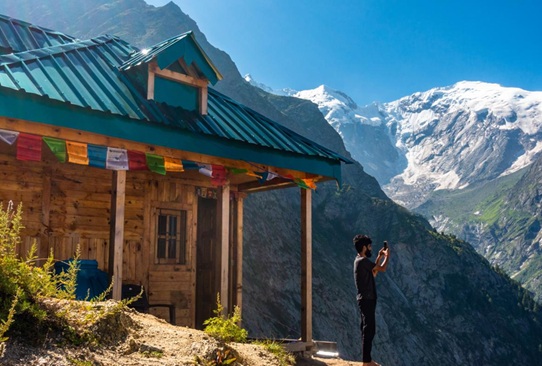(Preliminary Exam: Current Affairs)
(Mains Exam, General Studies Paper-2: Issues arising out of government policies and interventions for development in various sectors and their design and implementation) |
Context
The tourism sector in India is a rapidly emerging sector, which plays an important role in employment generation, cultural dissemination and economic development. In this context, NITI Aayog has released its new report 'Rethinking Homestays: Navigating Policy Pathways' on 22 August 2025, which suggests a model policy framework for the states to develop an inclusive and sustainable homestay ecosystem in the country.

What is Homestay
- Homestay is an alternative residential model of tourism, in which tourists stay in the house of a local family or homeowner.
- It not only provides them with cheap and convenient accommodation but also provides direct experience of local culture, food, traditions and lifestyle.
Role of Homestay in Tourism Sector
- Promote local employment and self-employment in rural and semi-urban areas
- Provide culturally authentic experiences to tourists
- Promote sustainable tourism by conserving local resources and involving community participation
- Ensure regional balanced development by promoting underdeveloped tourist destinations
Current Government Policy
- Currently, different states have different homestay policies. Some states have created registration, tax structures and incentive schemes but these lack uniformity and transparency.
- This is why NITI Aayog has recommended a model policy so that a coordinated framework can be created across all states.
About the NITI Aayog report
- Title: Rethinking Homestays: Navigating Policy Pathways
- Objective: Make regulations simple and transparent and build an inclusive homestay ecosystem
- Source: Based on insights from report aggregators, hosts and policymakers
- Emphasis on cultural preservation, local entrepreneurship and job creation
Key recommendations
- Model policy framework: Make regulation easier by adopting a common policy for states
- Digital portal: Centralized digital portal for registration, renewal and compliance management
- Light-touch regulation: Transparent and simple rules to protect tourists and homeowners
- Financial incentives: Incentives at the entire tourism destination level rather than individual homestays
- Capacity building: Enhance the capacity of hosts by training and connecting them to digital platforms
- Trust building: Emphasis on quality and safety to strengthen consumer confidence
Contribute to the establishment of an inclusive homestay ecosystem
- Strengthen the rural economy
- Women and Youth coming forward in entrepreneurship
- Promotion of local arts, crafts and food
- Promotion of sustainable tourism and environmental protection
- Ensuring equal opportunity and regional balance
Challenges
- Policy disparity across states
- Complexities of tax and registration
- Lack of digital literacy and infrastructure
- Excessive pressure on tourist destinations and environmental hazards
- Monitoring of quality control and safety standards
Way forward
- All states should simplify their rules in line with the model policy of NITI Aayog.
- Investment on digital infrastructure and capacity building programs will have to be increased.
- Development should be limited according to the carrying capacity at tourist destinations.
- Participation of local community and the system of benefit sharing should be given priority.
Conclusion
The NITI Aayog report is an important step towards formalizing and organizing the homestay sector. This will not only promote sustainable development in the tourism sector but will also give a new impetus to the rural economy and local entrepreneurship. Despite the challenges, if it is implemented with an inclusive, transparent and balanced approach, India can emerge as a homestay destination on the global tourism map.



